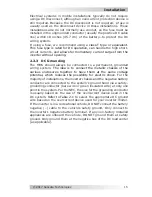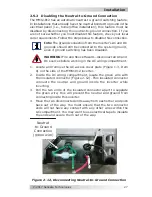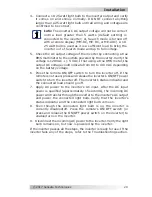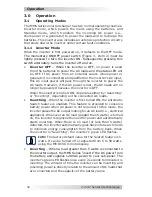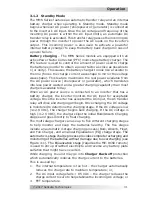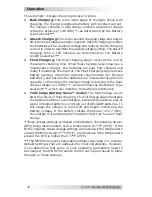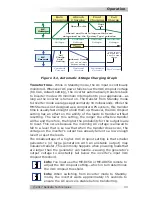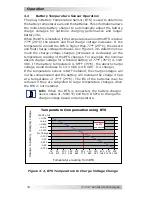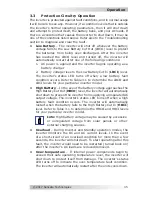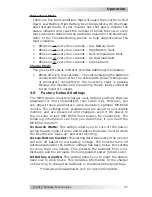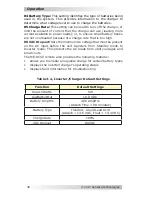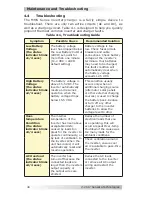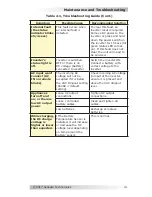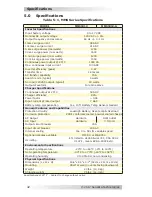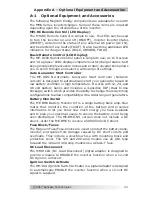
© 2017 Sensata Technologies
29
Installation
4. Connect a 10-25 watt light bulb to the inverter output and verify
it comes on and shines normally. DO NOT connect anything
larger than a 25-watt light bulb until all wiring and voltages are
con
fi
rmed to be correct.
Info:
The inverter’s AC output voltage will not be correct
until a load greater than 5 watts (default setting) is
connected to the inverter; or, Search mode is turned off
with a remote display (MM-RC, ME-RC, or ME-ARC). A 10-
25 watt bulb is used as it is a suf
fi
cient load to bring the
inverter out of Search mode and up to full voltage.
5. Check the AC output voltage of the inverter by connecting a true
RMS multimeter to the outlets powered by the inverter. Verify the
voltage is 120 VAC +/- 5 VAC. If not using a true RMS meter, the
output AC voltage could indicate from 90 to 130 VAC depending
on the battery voltage.
6. Press the remote ON/OFF switch to turn the inverter off. If the
remote is not used, press and release the inverter’s ON/OFF power
switch to turn the inverter off. The inverter’s status indicator and
the connected load should go off.
7. Apply AC power to the inverter’s AC input. After the AC input
power is quali
fi
ed (approximately 15 seconds), the incoming AC
power will transfer through the inverter to the inverter’s AC output
and power the connected light bulb. Verify that the inverter’s
status indicator and the connected light bulb come on.
8. Even though the connected light bulb is on, the inverter is
currently disabled/off. Press the remote’s ON/OFF switch (or
press and release the ON/OFF power switch on the inverter) to
enable/turn on the inverter.
9. Disconnect the incoming AC power to the inverter. Verify the light
bulb remains on, but now is powered by the inverter.
If the inverter passes all the steps, the inverter is ready for use. If the
inverter fails any of the steps, refer to the Troubleshooting section.

